Have a true story you’ve always wanted to tell? Writing nonfiction books will build your authority in your niche and could even be highly profitable. Keep reading to learn more about how to get going with Plottr’s nonfiction project template.
What is the Write Your First Nonfiction Book Template?
Project templates in Plottr are designed for planning out your entire project. The Write Your First Nonfiction Book template is one such example.
This template is based on a book and course by author, strategic book coach and speaker Honorée Corder, who has published 65 books and counting.
Corder’s book is also titled Write Your First Nonfiction Book. Her course promises to take you “from blank page to book” and includes author interviews, advice on the stages of nonfiction writing, and more.
Keep reading to learn why this nonfiction project template will help you write a focused, well-structured book.
Why Use the Nonfiction Writing Prompts in This Template?
The prompts in Plottr’s Write Your Nonfiction Book Template will help you brainstorm a tight sequence of eight chapters. These will help you brainstorm:
- An introduction that entices readers to continue
- Ways to use your own story to encourage your readers to pursue their own goals and dreams
- Stories and examples that lend a sense of the attainable to your story
- A short formula readers can remember that will boost your own authority by association
That’s just half of the guidelines for how to write nonfiction. It’s also worth stating that nonfiction outsells fiction on some platforms (partially because its topics are highly searchable).
Keep reading for an overview of each chapter breakdown.
Overview of the Write Your First Nonfiction Book Template (with Examples)
Here’s an overview of each chapter outline in Plottr’s nonfiction template:
Prologue and Introduction
In the introduction of your nonfiction book, introduce your subject matter. What lived experience makes you an authority on this subject?
Think about what aspect of your subject matter you’re going to cover. What point of view are you taking?
Chapter 1: Encouragement
The chances are that your reader has picked up your nonfiction book wanting life lessons, wisdom, encouragement.
Make your reader feel like they absolutely can attain their desired results. People love hope. Design Chapter 1 to give your reader confidence about pursuing their goal.
Example: Say you were writing a memoir about your career as an athlete. Here, you could stress the importance of small habits and attainable goals that build discipline and stamina over time. Show your reader they can win by working on building similar good habits.
Chapter 2: Stories and Examples
Stories and examples bring ideals and dreams out of the abstract. They help your readers relate more to what you’re saying, because they give concrete examples that increase a sense of attainability.
Example: In the sports memoir example, maybe you’d share a story of a time an injury nearly ended your career, but commitment to your rehabilitation process paid off.
Chapter 3: Overview
This is the chapter in this method of nonfiction writing that gives readers the “meat” of the story. You’ve figured something out you want to share. This section tells your reader what they can do, step by step, to attain similar results or a more beneficial mindset.
Example: The athlete’s memoir might share daily steps that together lead to enormous growth.
Chapter 4: Short Formula
Here, you share a short, simple formula that is easy for your reader to remember that will help them achieve the results they want.
For example, the productivity “guru” James Clear writes about atomic habits, the kinds of tiny changes that bring remarkable results.
What will make this idea “sticky”? Something that readers remember? Maybe you could use:
- An acronym. These are useful mnemonic devices (like “KISS – Keep It Simple, Stupid”)
- Rhyming. Maybe your formula forms a rhyming phrase
- Alliteration. For example, Home Depot’s slogan uses repetitive explosive “D” sounds and versions of the verb “to do” to create a sense of activity: “How Doers Get More Done”
Example: Maybe the athlete would coin phrase such as, “Train come sun or rain, but listen to pain” if their memoir were about recovering from a catastrophic accident
Chapter 5: Formula in Action
In this chapter, show your reader how they can put what they’ve learned into practice.
Don’t only show them how they can succeed. Give them actionable, practical ways to avoid (or at least overcome) failure.
Example: If the prior chapter the memoir were about training hard but listening to the body’s limits, this chapter might explore different scenarios and how to apply this advice while remaining professional.
Chapter 6: Tips, Tools, Resources and Ideas
This chapter provides a space to share tips, tools, resources and ideas you’ve encountered on your own road to where you are now.
Think about all the goodies you can include to leave your reader with a sense of gratitude for your generosity.
Example: In our memoir example, this might be resources on nutrition, learning how to have healthy and mindful boundaries, or other resources.
Chapter 7: Get Better Results
Do you have some additional secret sauce? Pointers for avoiding mistakes or accelerating results? Put them in this chapter, a little of both if you’re feeling generous.
Example: Maybe you’ve discovered something lesser known. A specific meditation practice that boosts focus, or a routine that goes against commonplace misconceptions while achieving better results.
Chapter 8: Call to Action
End your nonfiction book with a strong call to action that leaves your reader inspired to go forth and achieve their goals.
Corder says this:
“You got ’em fired up in Chapter One, send them off to do great deeds, and, as my friend Jay Papasan says, Eat tacos. Okay, not really about the tacos, but you do want them to feel empowered, inspired, and well equipped to take immediate action. (This can, and may, include eating tacos. Who’s to say?)”
Example: Website creation platform Wix gives a list of 30 examples here, such as “Create a website you’re proud of” (their own). What call will inspire your reader to act?
Ready to use Plottr as your nonfiction writing graphic organizer?
How to Use the Write Your First Nonfiction Book Template
It’s time to tell your story and inspire others. Here’s how to get going with Plottr’s project template.
First, install Plottr and make sure you have an active plan. You can also get started with a free Plottr trial.
- Step 1: Open Plottr and under Files in the dashboard, choose Create From Template
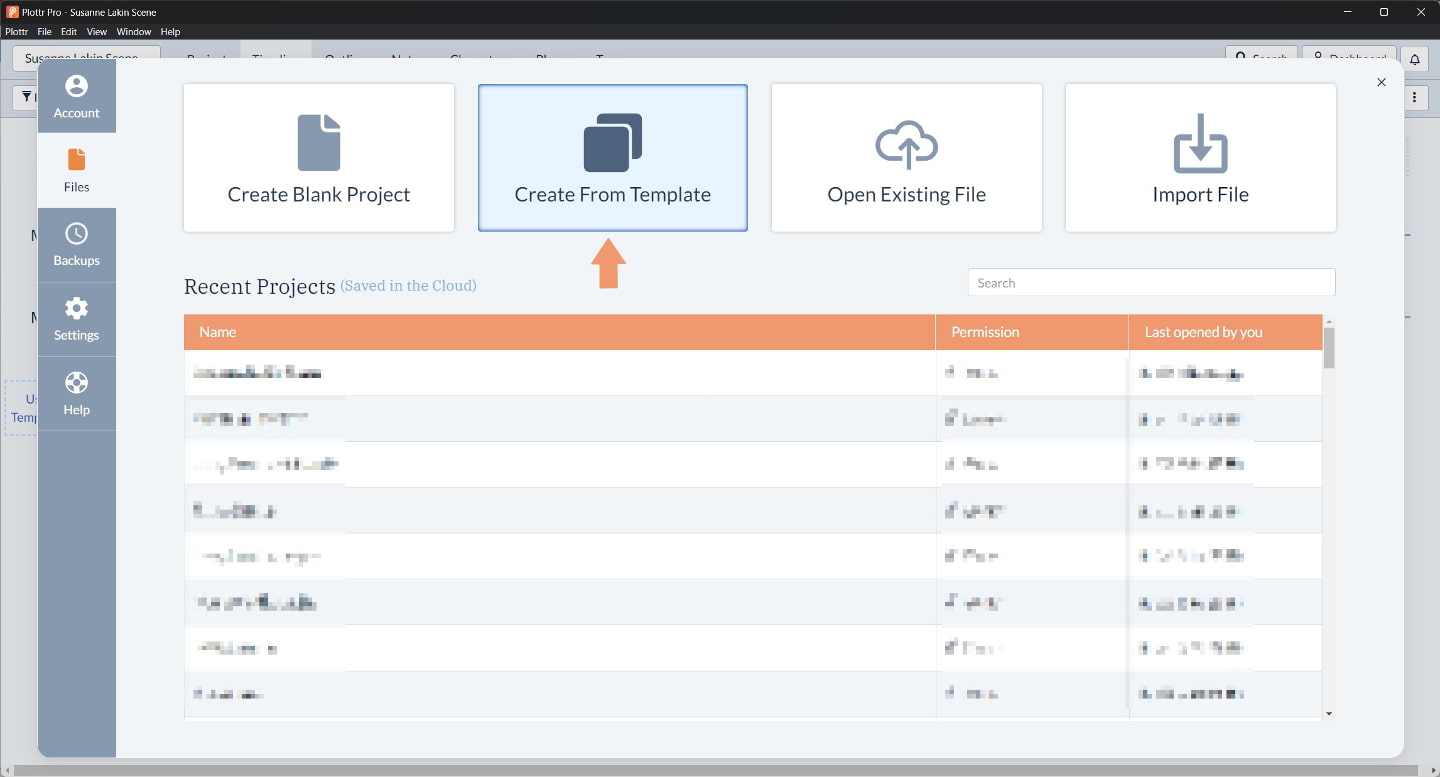
- Step 2: Under Project Templates, choose Write Your First Nonfiction Book, then click Create New Project
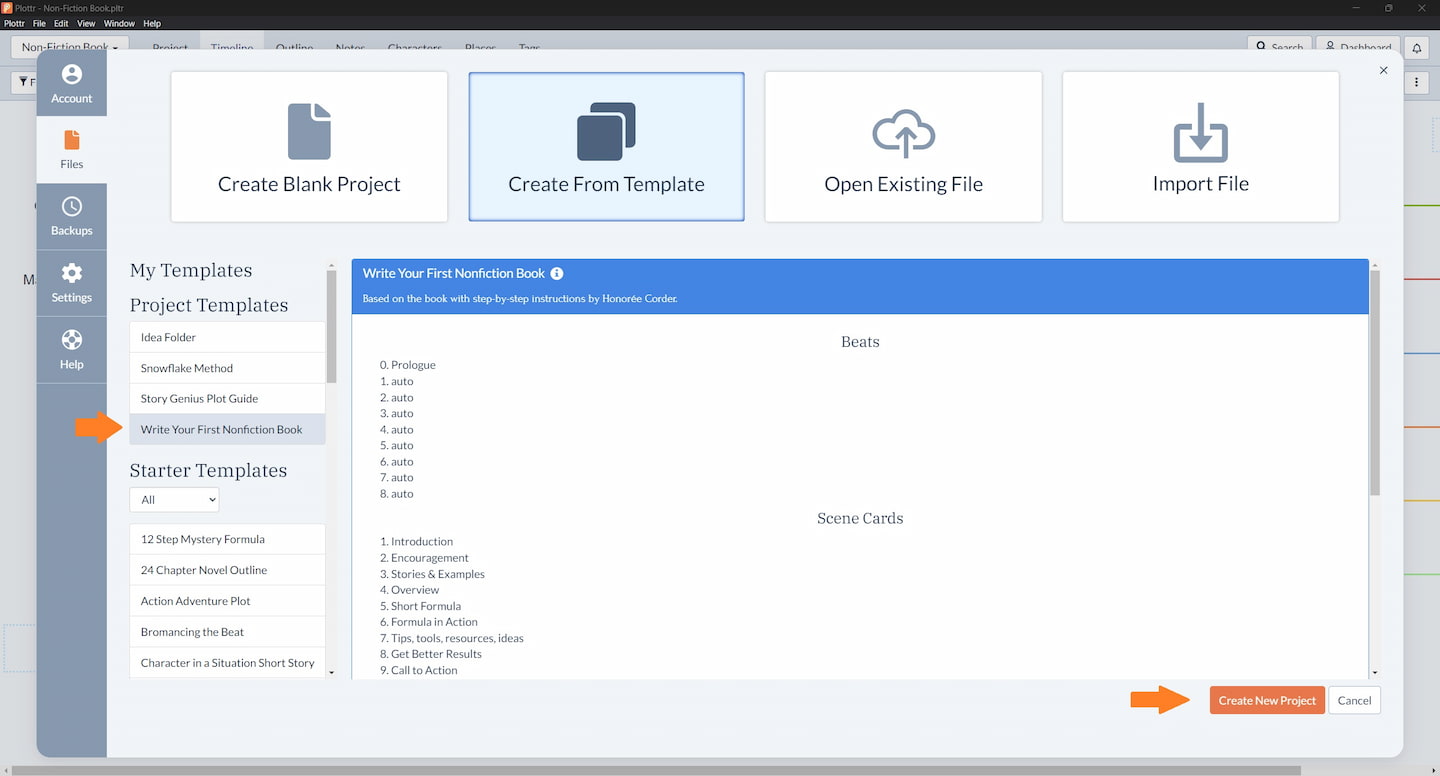
- Step 3: Your project will open in timeline view. You’ll see a plotline called Outline, a plotline below it called Main Point for summarizing the main point of each chapter, and four plotlines for noting down chapter ideas
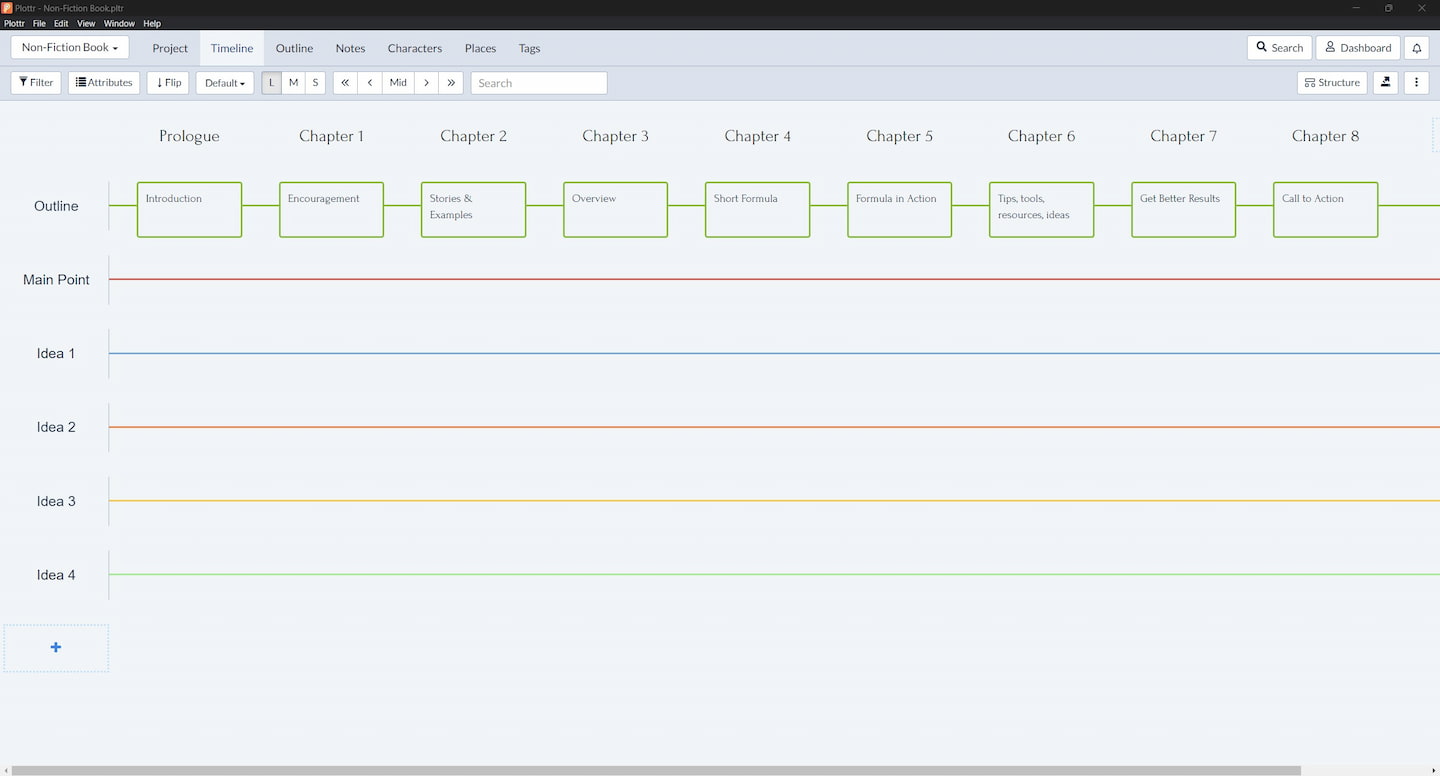
- Step 4: Click any of the Outline scene cards to see the suggestions for that chapter. Brainstorm ideas in the Ideas plotlines
There are other project templates in Plottr to try, too, such as the Story Genius template. Play and find your favorites.
Tell Your Truest Story
Start plotting better narrative now with a free Plottr trial. Comment your thoughts or questions below!
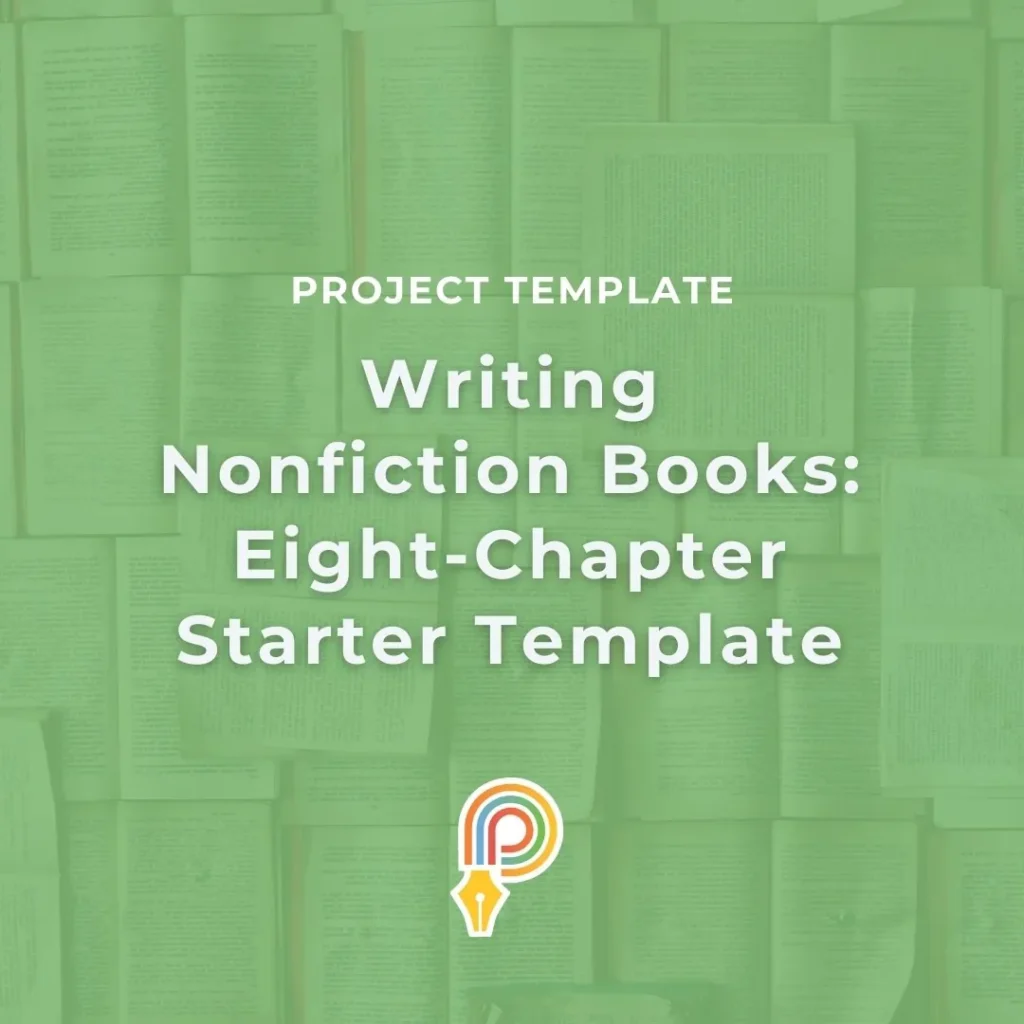

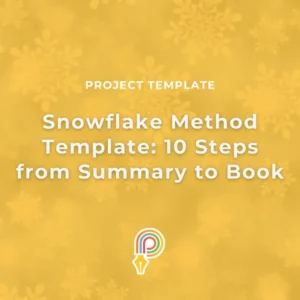
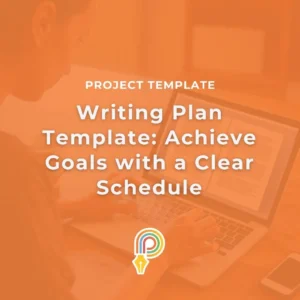



3 thoughts on “Writing Nonfiction Books: Eight-Chapter Starter Template”
Exellent.
Thank you, Hans! Thanks for reading our blog.
I love how you cover this topic with such depth and clarity. It’s evident that you put a lot of effort into researching and presenting this information. Well done!